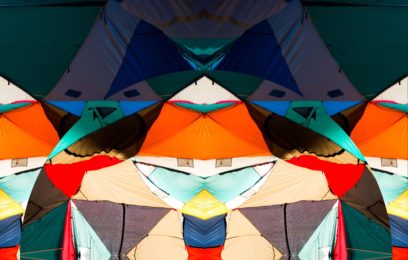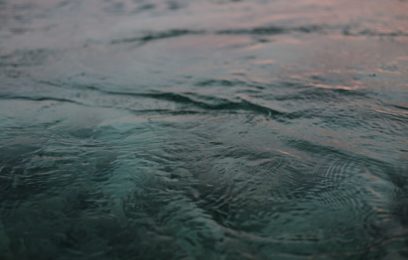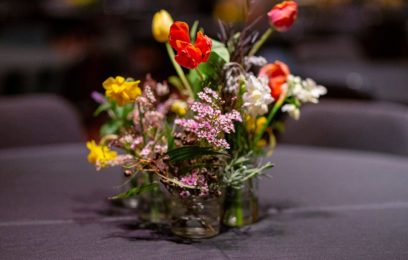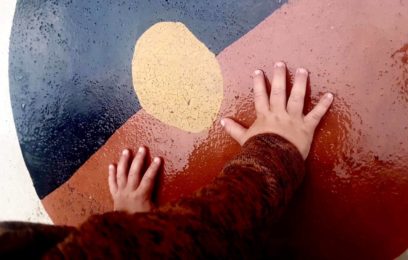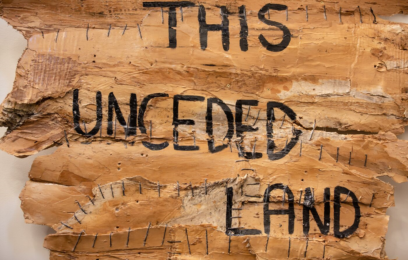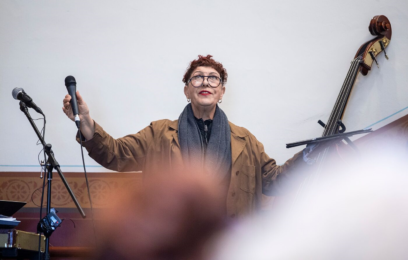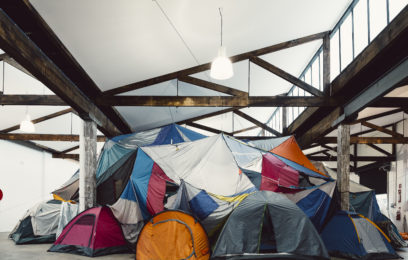How to respond to an emergency
by Timmah Ball
This piece is part of First Nations in the House, a residency program as part of Refuge that invites writers from across the country to share and respond to the matter of displacement, honouring and respecting local stories of resilience, survival, loss and the future.
This response is to the 2019 Refuge, Displacment and was written on the lands of the Boon Wurrung and Woiwurrung (Wurundjeri) peoples of the Kulin Nation. I want to pay respect to their elders past, present and future and cultural knowledge systems that they continue to share with others who make home on their lands. In writing this response I hope that we continue to centre their culture and experiences in order that we all learn to live and care for this country more deeply.
Yornup
Kudardup
Manjimup
Yeagarup
Peerabeelup
Beedelup
Channybearup
Darradup
Nilup
Meerup
Boranup
We drive through small towns on Noongar country, formally recognized as south WA. Mum laughs at my pronunciation of their names and the repetitive ups that I over accentuate. The sound is familiar to the deeply ingrained English vernacular that I was born into. She explains to me that Up means plenty of water in Noongar. Water is life and mob knew to create homes near the abundance of lakes, streams, rivers and estuaries inland, not far from the wild oceans that thrash against cliffs at the edge of the divide.
We’re on our way to Denmark a strange but not unexpected name for a tourist town on Minang country. We’ve never been this far south and I begin to understand the layered cultures, languages and peoples of this area. A place that is both familiar and sharply different to Ballardong. Rapid changes took place on this country, but the connection to ancestral lines remains. Back in Narrm/Birrarung Ga I look at Noongar country on Google maps, searching for the little towns ending in Up scattered amongst the other places named after British cities and settlers in the landscape. I click on each of the Up towns and Google shows an image of water, the lakes or rivers that they’re near. It’s not as if I didn’t believe mum, I loved the snippets of language she shares with me which act to reaffirm our knowledge and connection to Boodjar (Noongar for country.) But our lives are bound to western frameworks which and difficult to disconnect from. So I use Google to ‘prove’ something that I already know.
Living on unceded lands of the Kulin Nations I learn from Koori elders where forums like Refuge 2019: Displacement centre their knowledge and offer another view of the city we’ve become too familiar with. Their cultural systems informed how they survived and continue moving. Uncle Dave Wandin talks of the fire ways of the Wurundjeri people. He says ‘when a fire burns uncontrollably the best thing to do is turn 180 degrees in the opposite direction and start a smaller fire to meet its eye.’ ‘That’s what we did to manage fires for thousands of years pre-settlement.’ But these methods are only starting to influence emergency management systems and remain on the margins. Uncle Dave says that he’s spoken to everyone from politicians to the CSIRO and while they listen and adapt their systems where appropriate, they still remain scared. Unsure what it would mean to change systemically when they’ve generated a whole industry. During the summer seasons, emergency management accelerates where marketing collateral and information packs are disseminated telling people how to protect their homes. Automated Text messages are sent so they have enough time to leave their houses, and they follow quickly. These techniques saved lives after the tragedies of Black Saturday where heat stung through concrete all the way to Narrm. But there is something bigger happening, an absence or a silence about what we really need to do.
I met Uncle Dave at Arts House, Refuge in North Melbourne. The heavy colonial architecture was reimagined as a space centred on the traditional owners of this land. On the imposing staircase with ornate wood finishing a symbol of early settler wealth Yorta Yorta musician Allara Briggs Pattison redefined how we’ve come to live here over the past 200 years or more. With an incisive and cheeky tone, she told us that she’s ‘gonna start a Murnong farm in her rental in Preston’. She strangely reminded me of my own bad habits where Uber eats replace fresh food and cooking when time moves too quickly. It’s not until I sit with Uncle Dave again that I understand more deeply that she’s not just critiquing the status quo, Murnong was and is the Wurundjeri potatoes with far more nutritional value than the introduced foods we’ve acclimatised too. But as Uncle Dave explained it’s not easy making these changes however obvious and urgent they seem. We should all be growing Murnongl in our backyards. But Uncle Dave wonders whether people would prefer to see us working on the margins then using our knowledge effectively. Making boomerangs for tourists rather than systemically changing mainstream law and policy.
Well-meaning participants move through Refuge engaged by the talks and Aboriginal knowledge systems and while the weekend marks a desire to move towards something new I wonder where the policymakers and strategic planners are. People who understand how the rigid colonial system works. On the City of Melbourne Planning scheme, Arts House is zoned public use and commercial. Heritage overlays protect the colonial architecture but there is nothing to recognise or nourish the Aboriginal values lying beneath the built form structures.
At the end of Refuge I sat with non-Indigenous women from the Red Cross and theatre-maker Kate Sulan in a workshop called RediPlan. It aimed to support people to prepare for an emergency, providing practical advice on what household items to take as well as the psychological readiness to manage the stress of leaving home if a catastrophe hit. Kate talked of the emotional and creative practices she’d developed with St Joseph’s Learning School as a way to adapt emergency management processes to people with different needs. Music and comfort food played a role in preparing for a disaster, an apple, chocolate and a song might seem trivial but it could also create a moment to feel safe in the chaos. Kate’s ideas were soothing as I thought about the song or songs I would play in an emergency and the way I often use music to alleviate stress and distance myself from injustice for the brief duration of a song. The RediPlan workshop seemed to fuse what I long for, a point where creative pleasure blends with the technical frameworks we are expected to adhere too. Listening to music and other forms of creative engagement are so important to who we are but are acts that are considered a luxury and quickly dismissed. RediPLan shifted these binaries and showed me how art and emergency processes can work together. Creating new and unexpected relationships, which are needed to address the challenges, we face.
As I left Refuge I felt stronger through the knowledge that Koori and other mob shared, equipped with new ideas and a renewed sense of hope that our culture and peoples have always and will continue to survive. But leaving the ornate building and heavy burgundy doorway I was unsure how this will spread to the technical industries that were absent over the weekend. The decision-makers with the capacity to implement the ideas we spoke of but are rarely present in the room. We can change through our own actions but will maps ever reflect the realities hidden beneath the colonial architecture that housed vital conversations over one weekend? We will keep moving but change requires others to listen and move with us too.
Image supplied by Timmah Ball
